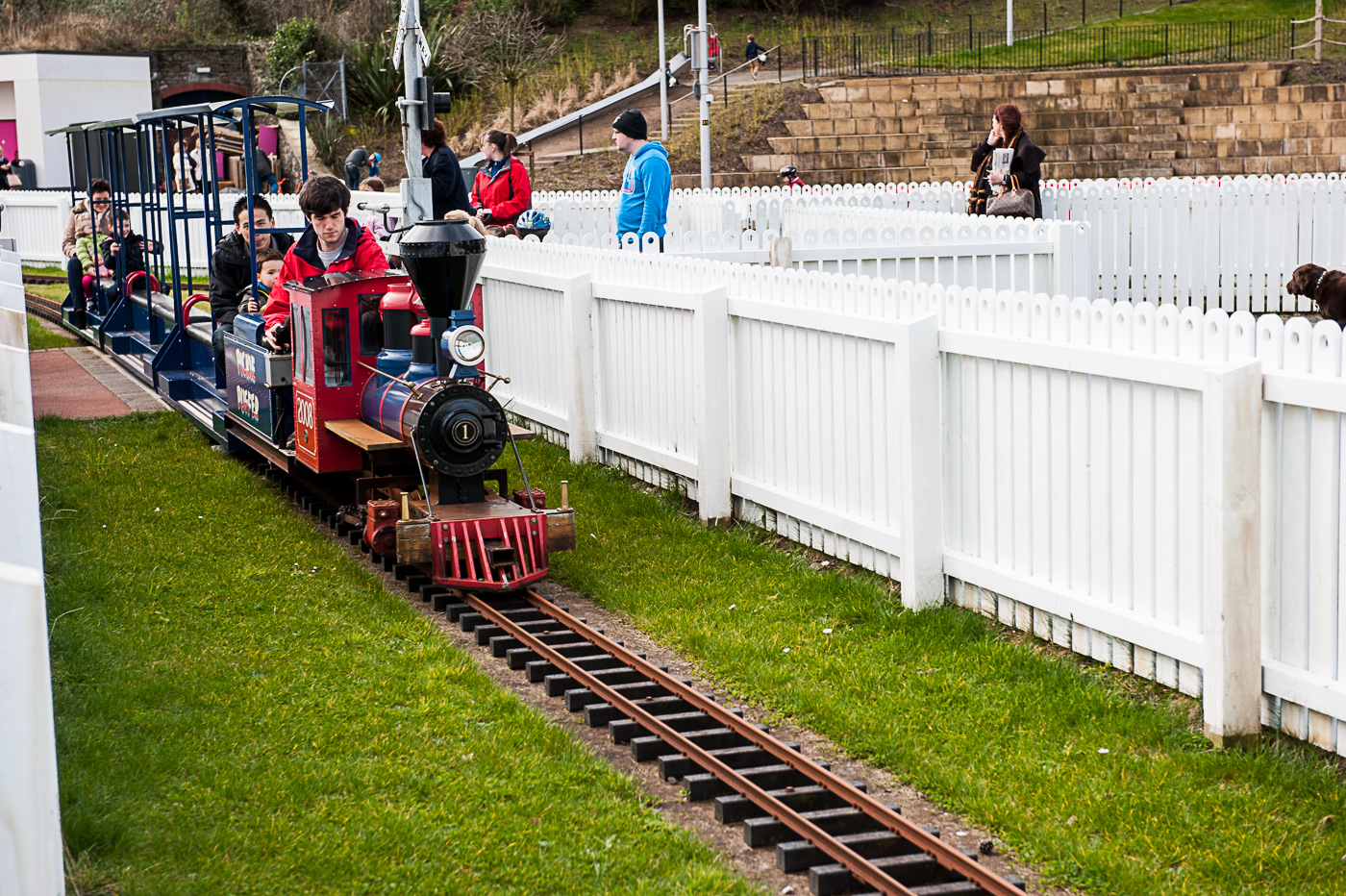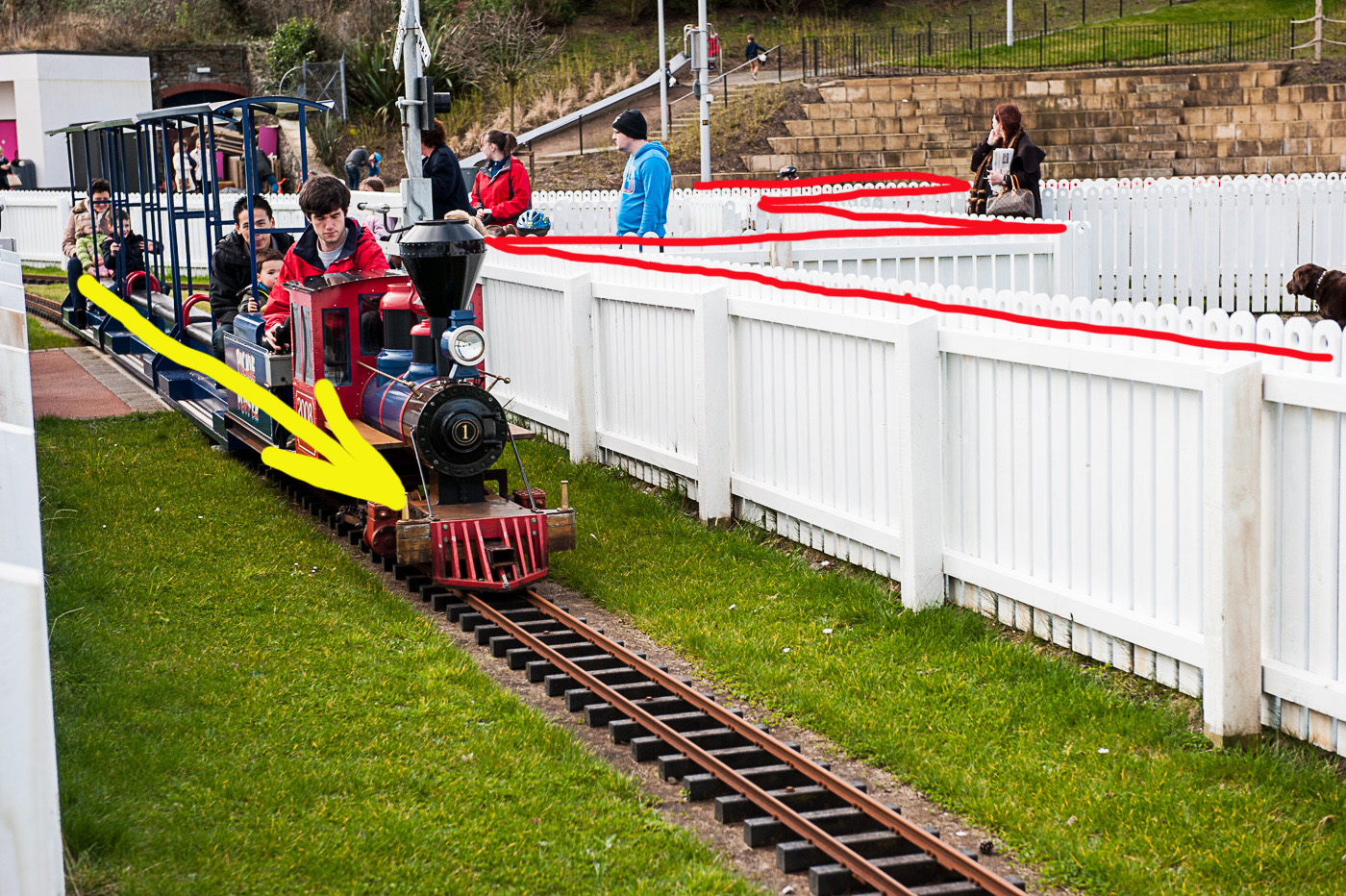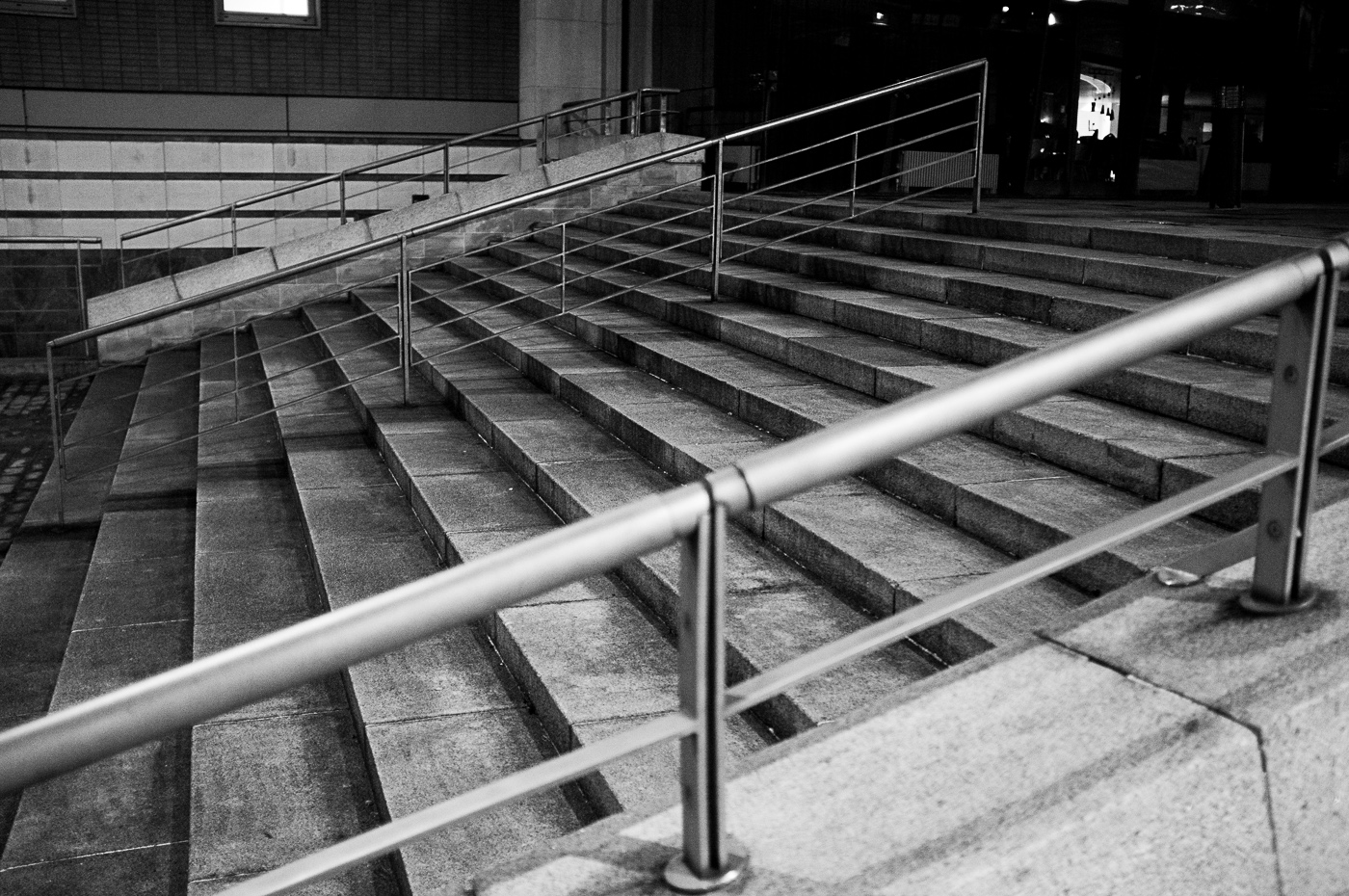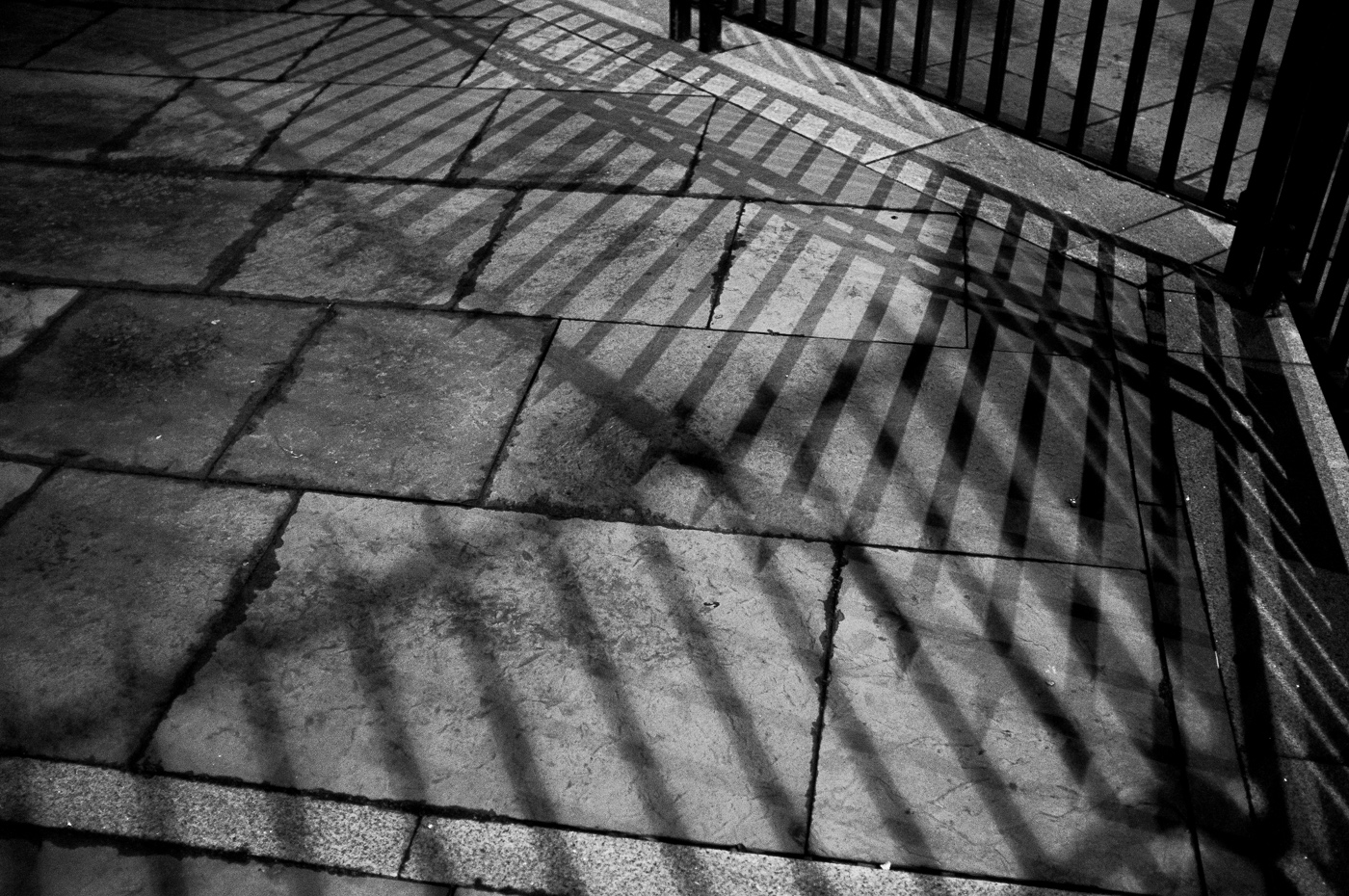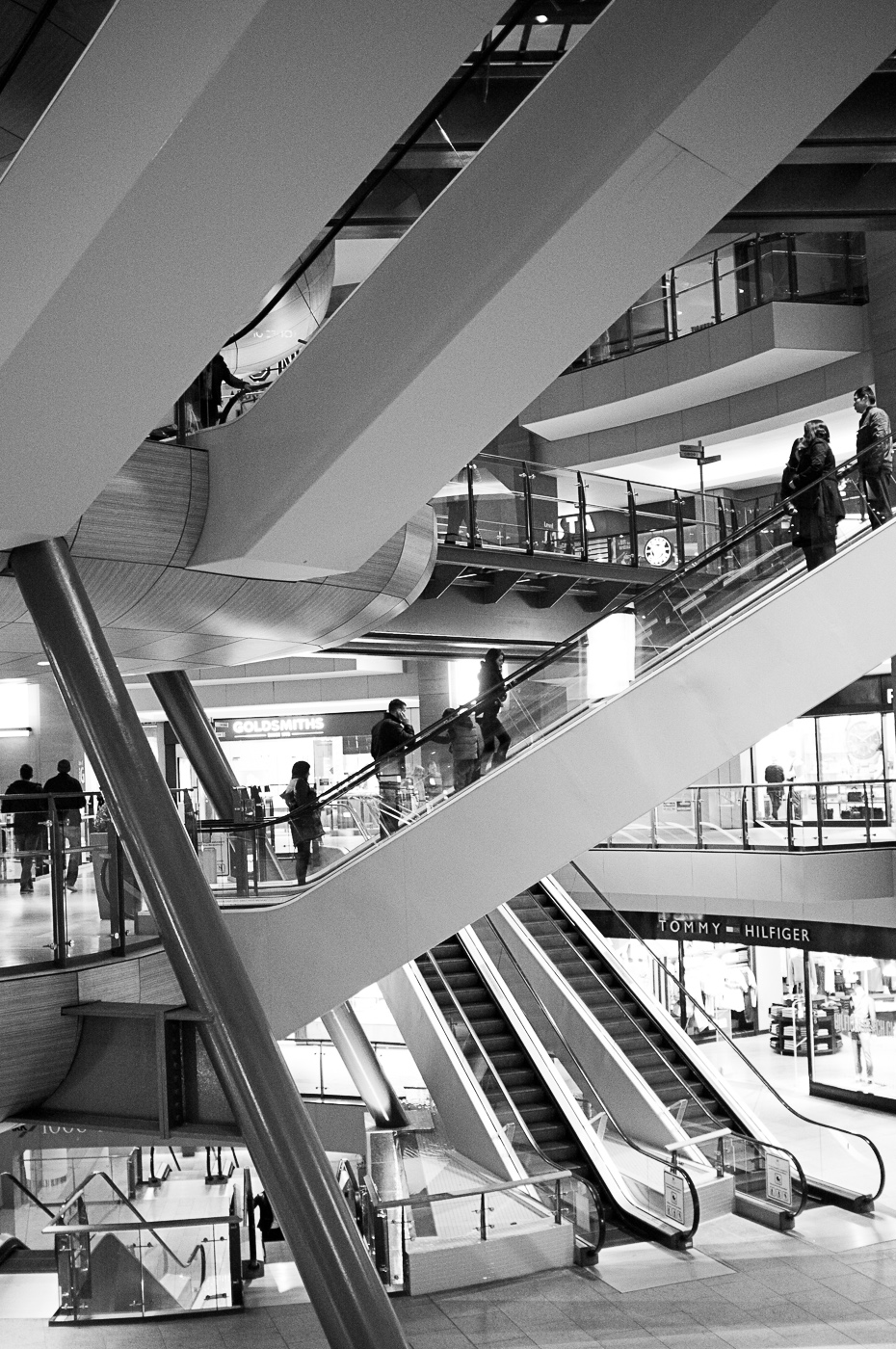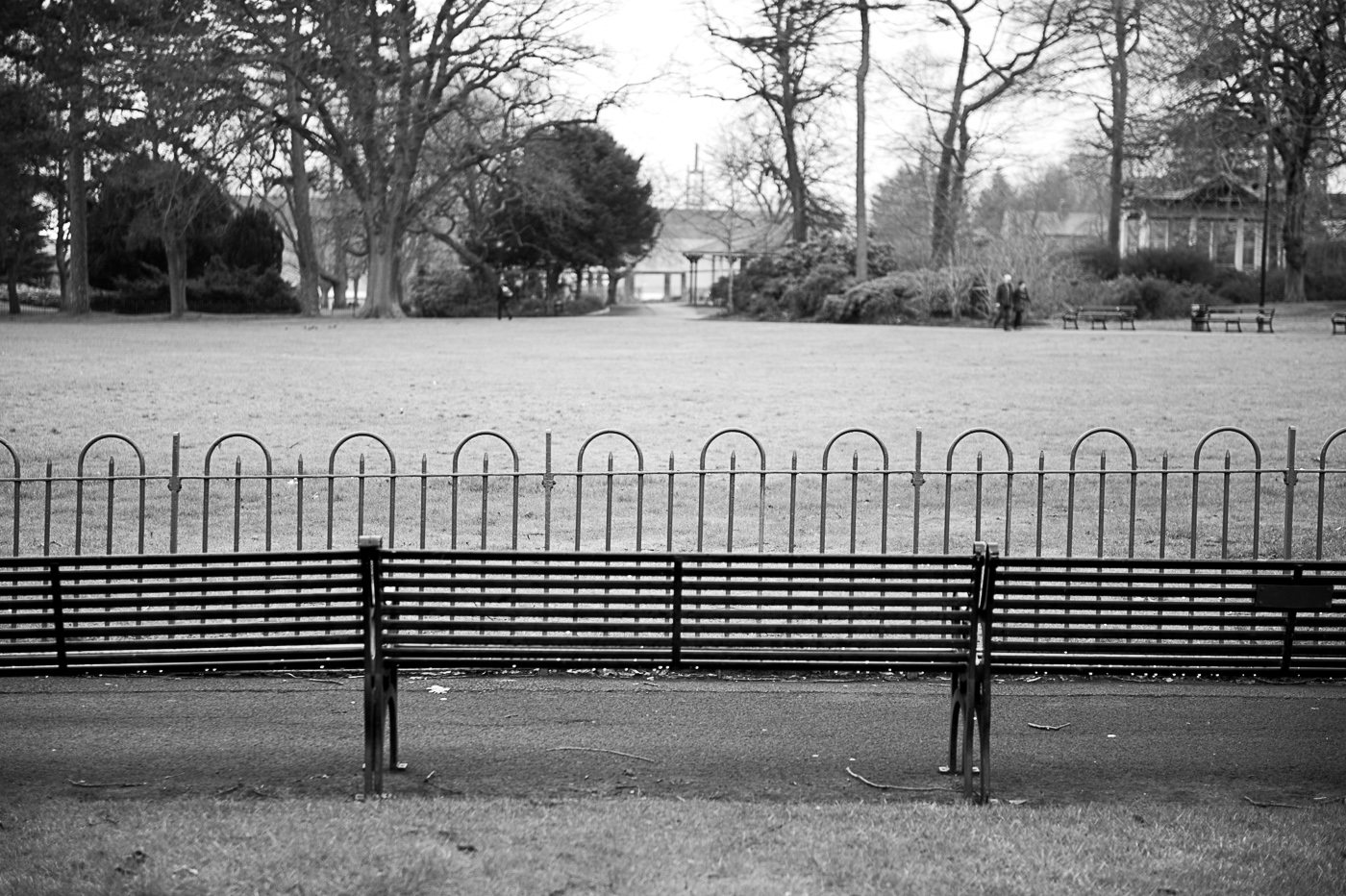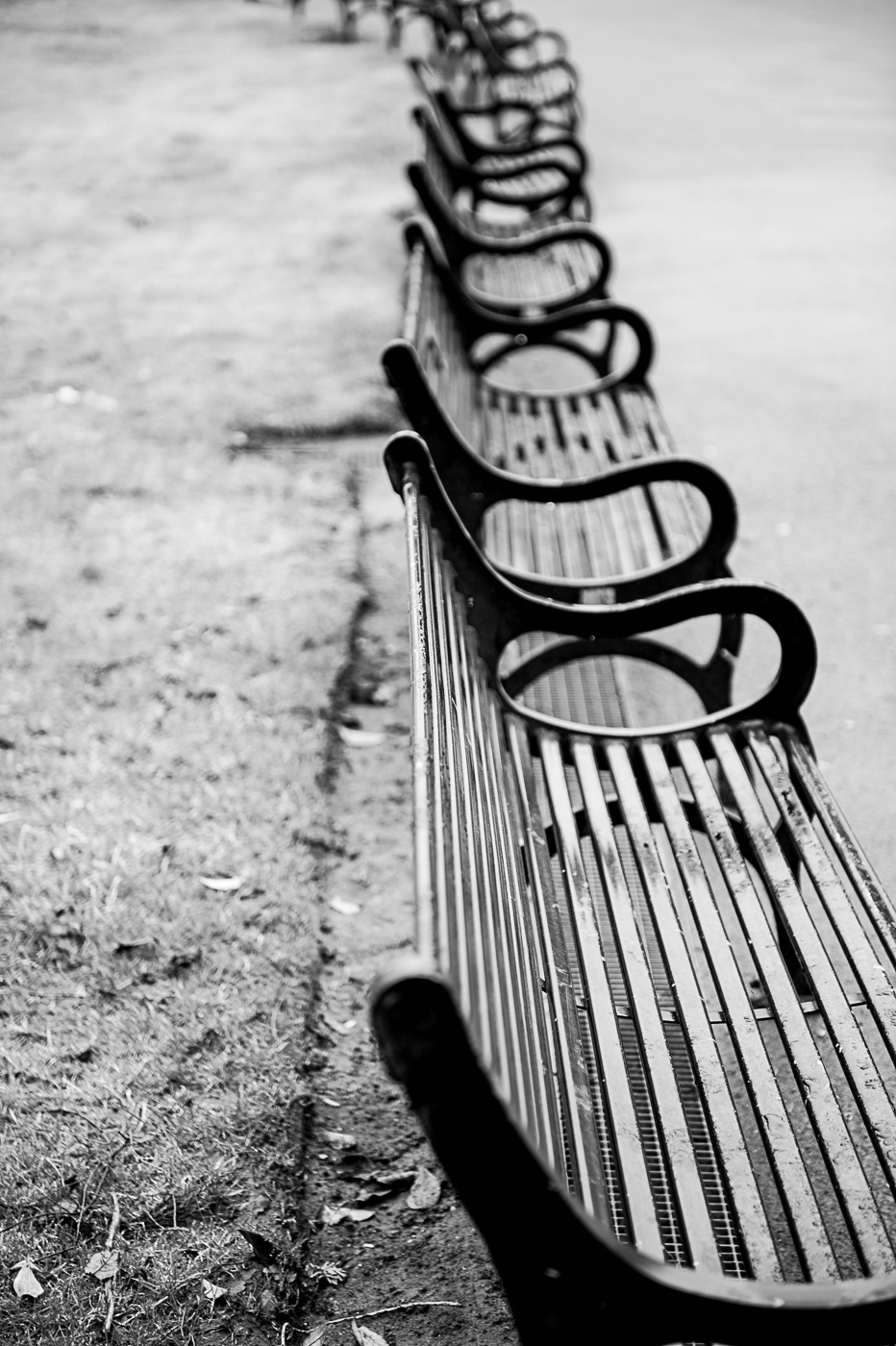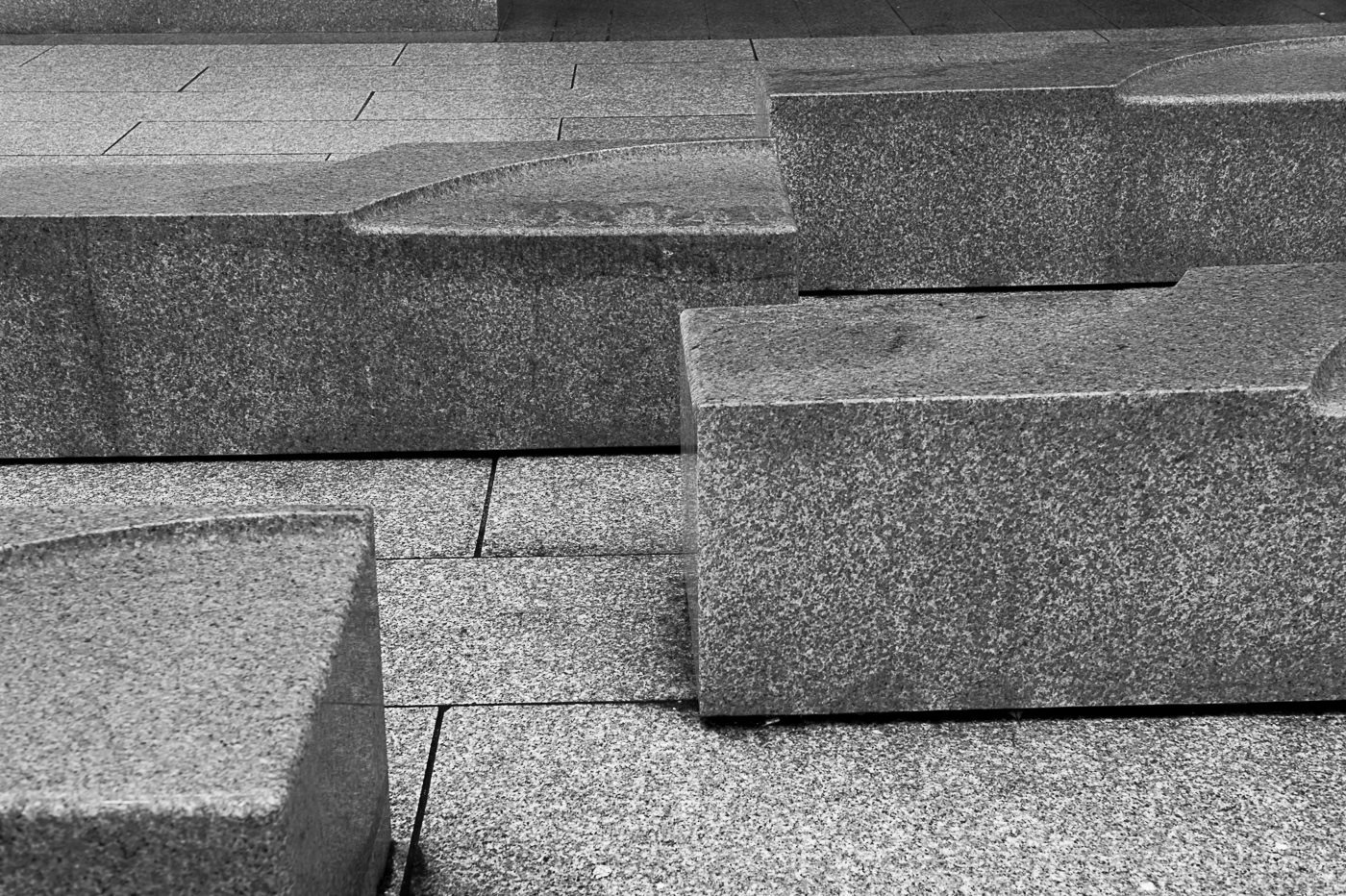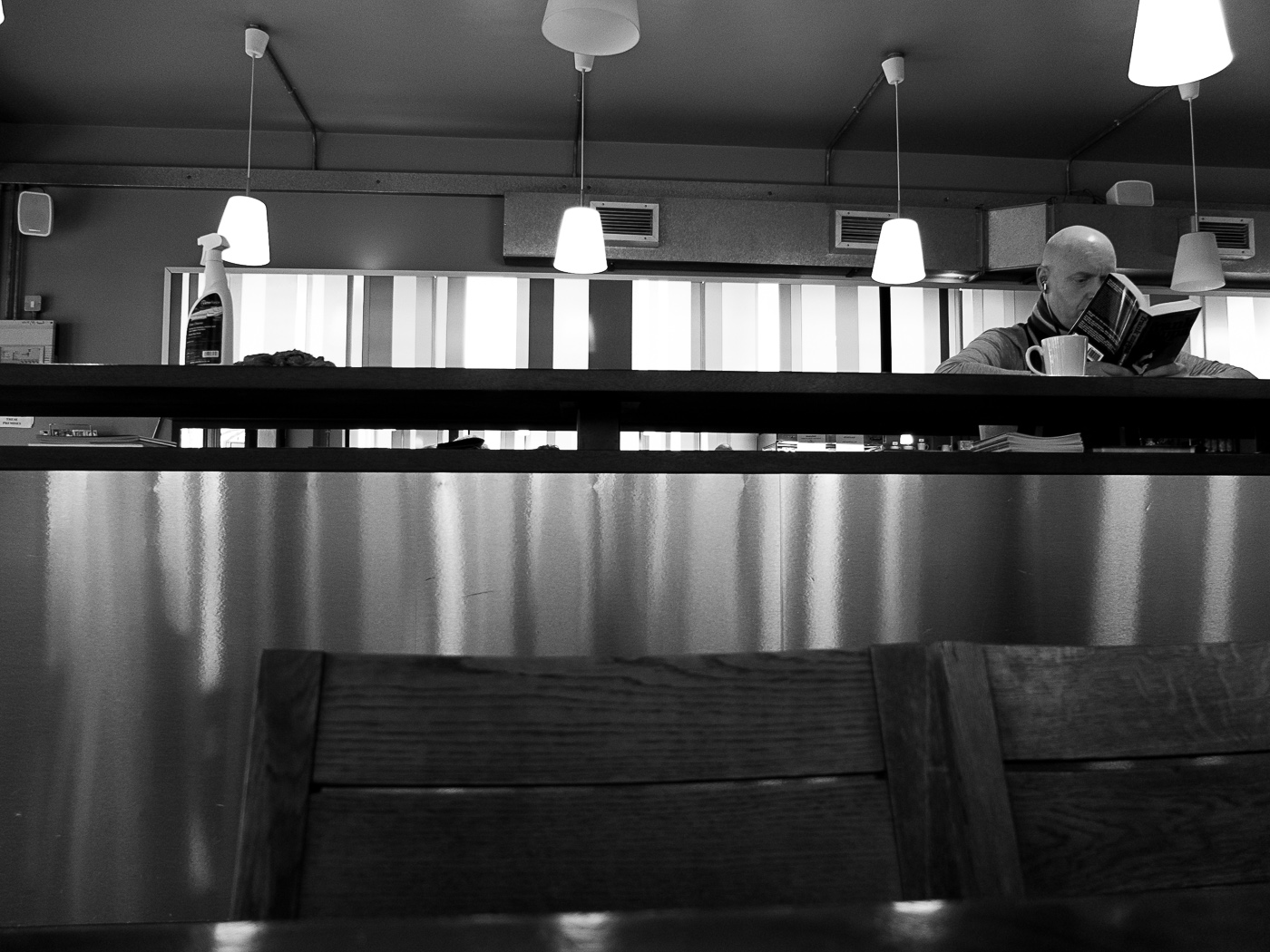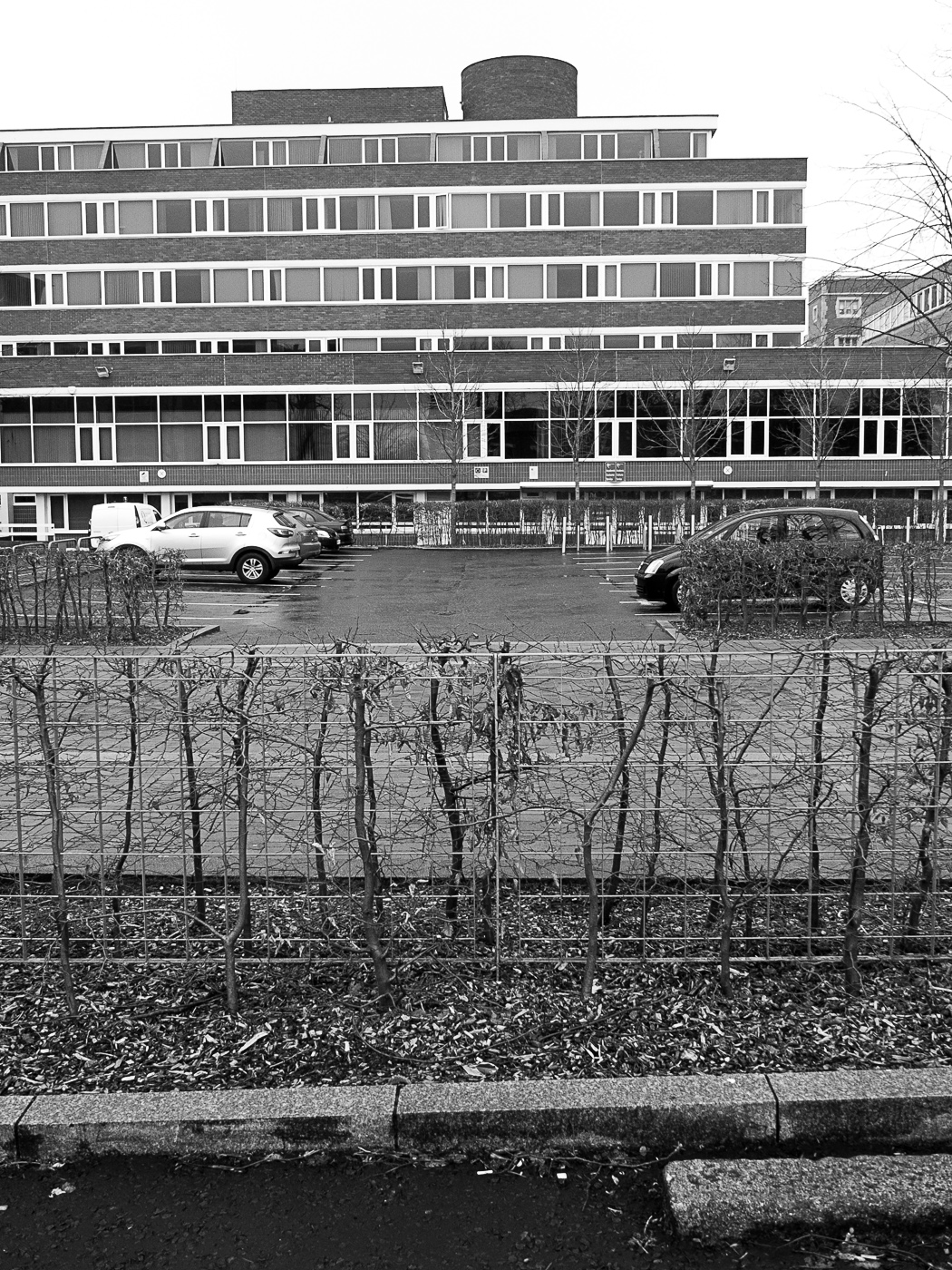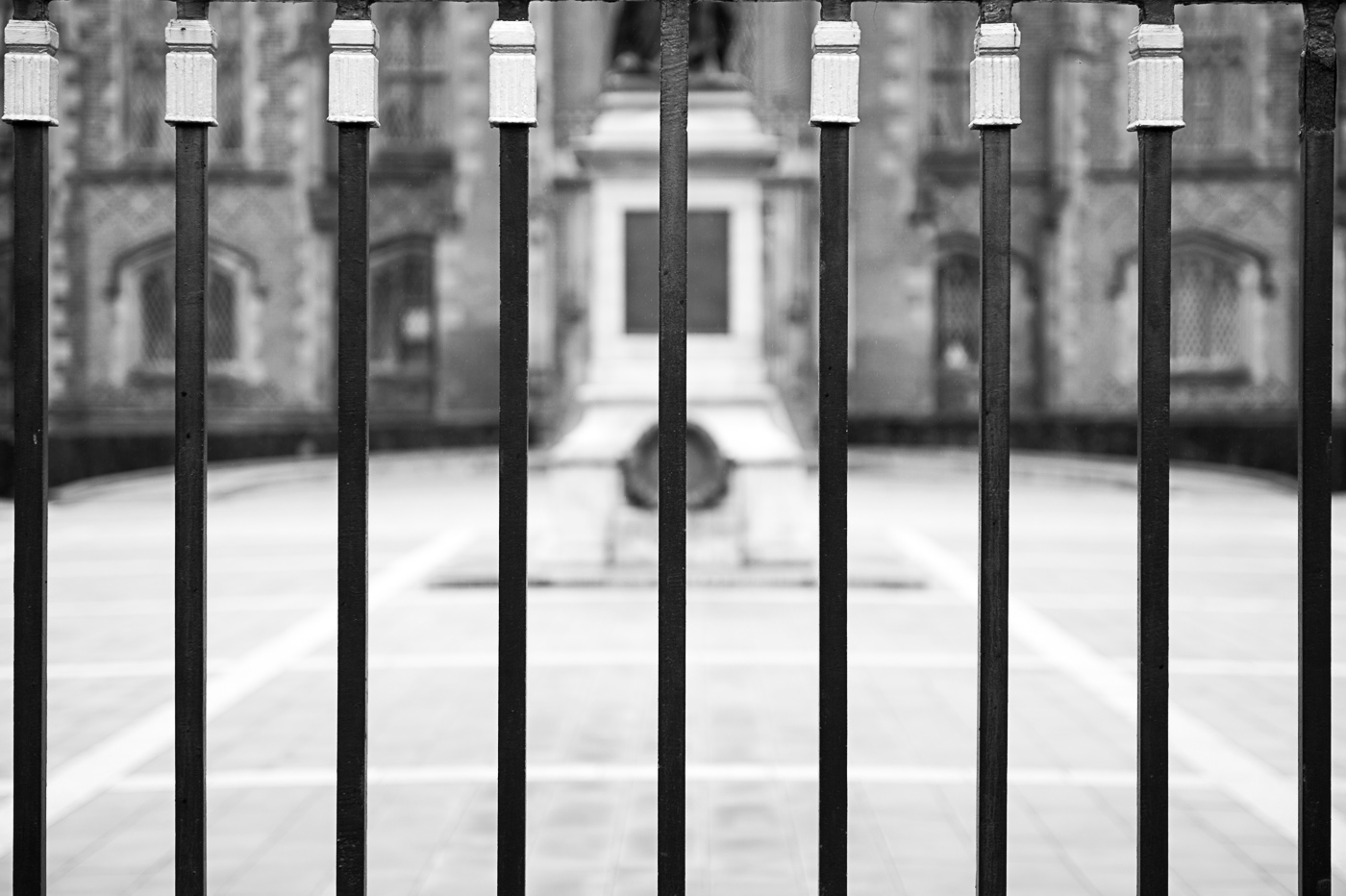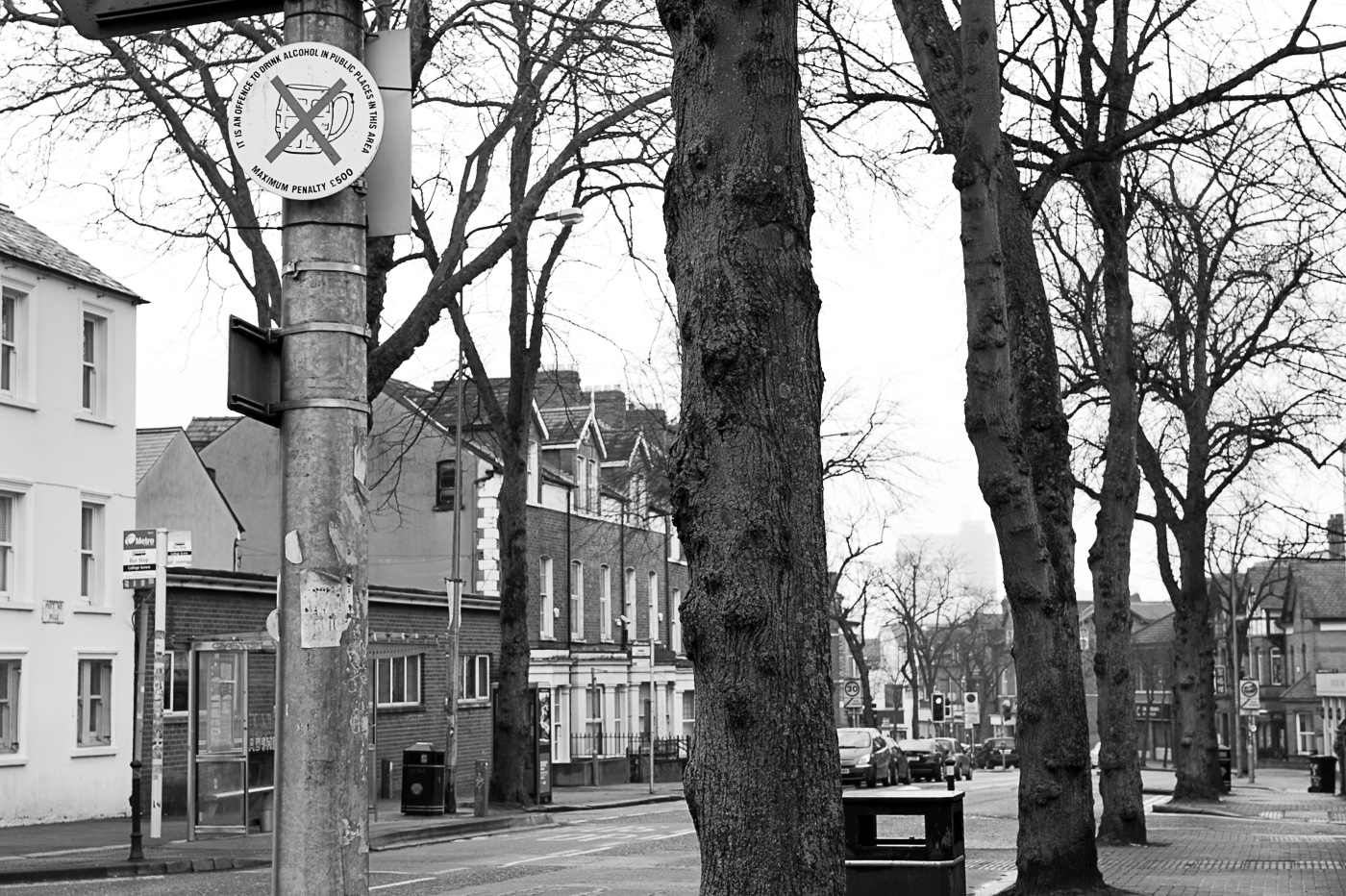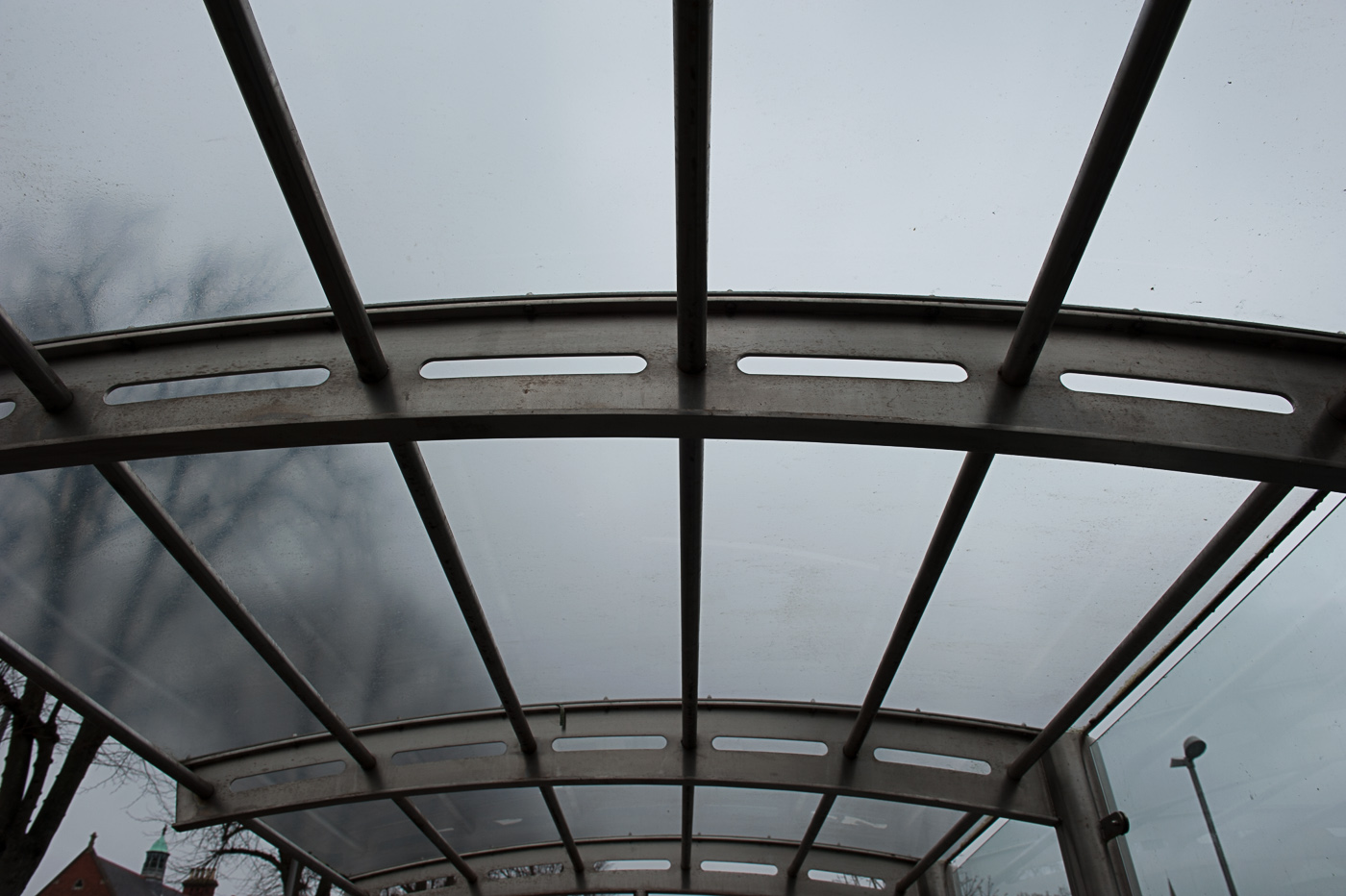The aim of this exercise was to look for and take four photographs using curves to emphasise movement and direction.

In this first photograph I like the way the curved white line cuts neatly through the maze of shadows on the ground created by the tree branches. This line guides the viewer through the photograph and around the bend as it guides the runner in real life. The fact that the runner is off the ground and casting a strong shadow is reminiscent of the photograph of a man jumping over a puddle (Cartier Bresson, 1932)
In the second photograph the movement is more gentle. The old couple are pictured slowly ambling over the humpback bridge crossing the canal the curves of the bridge are reflected in the water of the canal. The curved contrast nicely with the rigid horizontal and vertical lines of the loch in the centre of the photograph and the anarchic undergrowth at either end.
This photograph doesn't quite meet the brief of the exercise there is motion generated by the runner, and it will follow the gentle curves of the fence background, but the median curves represented by the ribs of the bridge holding up tons of steel and concrete, their sturdy and strong appearance allowing the runner to pass under with confidence.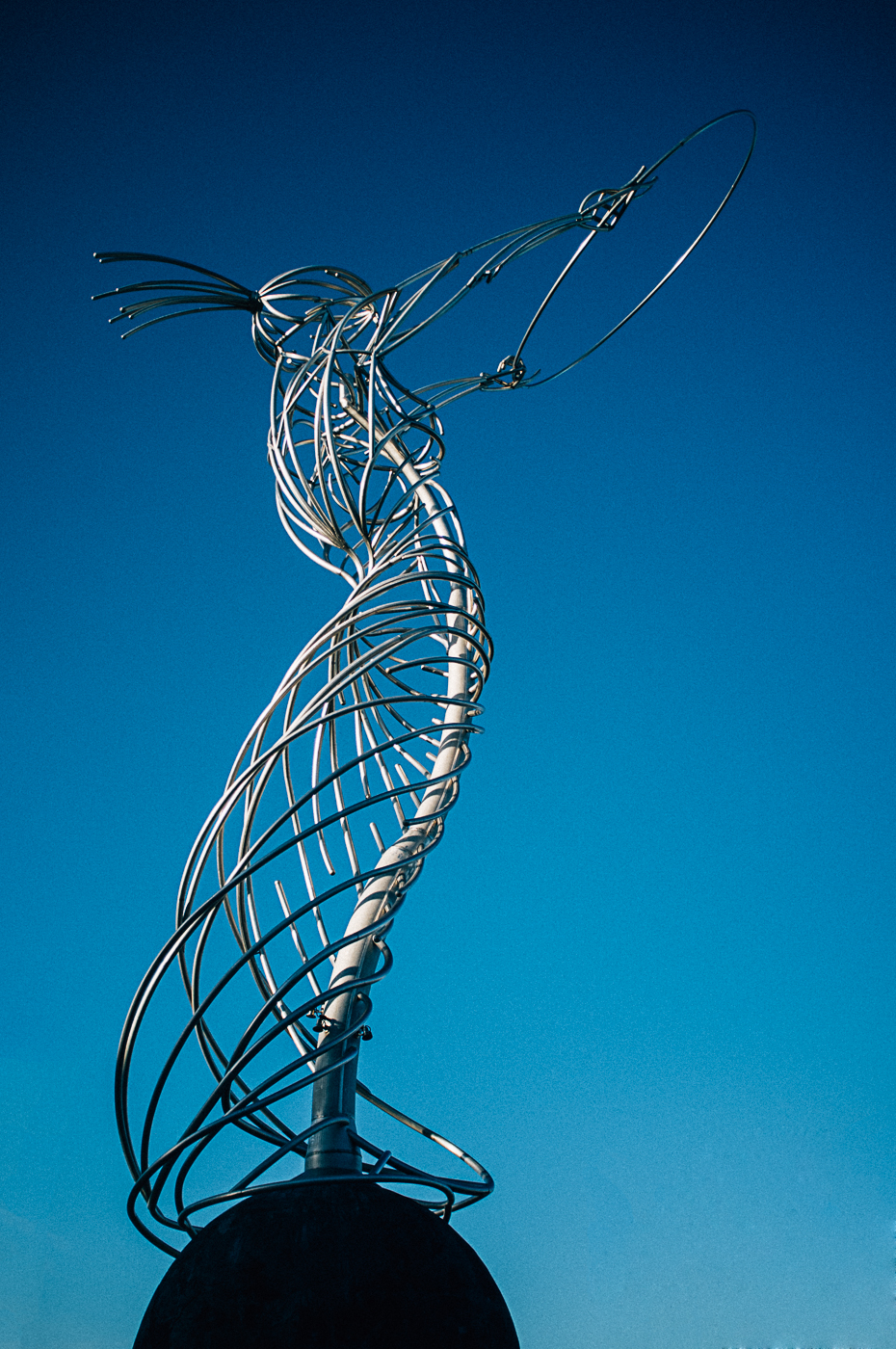
My final photograph is of a statue in Belfast called "'beacon of hope". In Belfast we have a tendency to ignore something's official name and bestow our own nicknames, consequently this statue is known as "The Thing With the Ring", "The Doll on the Ball" and " The Nula With the Hula". The reason I chose to use this sculpture in the exercise is because there is not a single straight line on it. The myriad of curved metal bars emanating from the single curved spine (although traditionally spines are at the back of a figure) combine to make up the figure of a woman holding aloft "the Ring of Thanksgiving". So essentially, thanks to its design, it would be impossible to take photograph of this sculpture without capturing curves.
Reflection
Was I wrong to include two photographs which did not specifically meet the brief of the exercise over two photographs which would have met the brief but were of much lower quality? Of course the ideal answer is that I should have strived to create two more high-quality images that met the brief. This failure was due to my approach to this exercise. Instead of sitting down and thinking about how to create images I just grabbed my camera and went out looking for images.
For instance in the last five minutes reflecting on this exercise it has occurred to me that instead of dismissing light trails as clichéd I could in fact have tried playing with long exposure and light painting, perhaps a runner with a head torch or several runners. Or perhaps swinging or throwing balls of fire. It does show that a little pre-thought could have made this exercise a lot more interesting and a lot less difficult.


